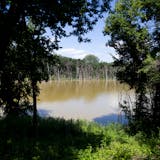Minnesota regulators on Thursday said burning wood or trash to generate electricity could be considered carbon-free under the state’s landmark 2040 climate law, depending on how emissions are counted.
The Minnesota Public Utilities Commission’s (PUC) decision was a loss for environmental nonprofits that wanted to rule out garbage and wood incineration because it creates climate-warming pollution when burned.
The PUC chose not to do that and instead took a bigger view, aiming to weigh initial emissions against other factors such as how much carbon an energy source would produce naturally anyway. That kind of analysis would help answer questions such as whether burning garbage for electricity is a climate benefit because it avoids methane released from landfills.
The Legislature defined carbon-free in its law simply as “technology that generates electricity without emitting carbon dioxide.” But utilities, environmental groups and others were sharply divided over how to interpret that.
Katie Sieben, a DFLer who chairs the commission, said taking action to rule out wood burning, for one example, would require the PUC to wrongly act like a “mini Legislature.”
“It’s not our job to write the legislation,” she said.
The Minnesota Center for Environmental Advocacy and the Sierra Club said the PUC’s ruling undermined the carbon-free law. “The commission’s decision distorts Minnesota’s landmark carbon-free law by allowing greater reliance on our most carbon-intensive sources of electricity,” said Barbara Freese, an attorney for the Center for Environmental Advocacy.
Besides wood and garbage, the PUC decision will impact the future of hydroelectric power, hydrogen combustion, fossil fuels paired with technology to capture and store carbon emissions, and more.



